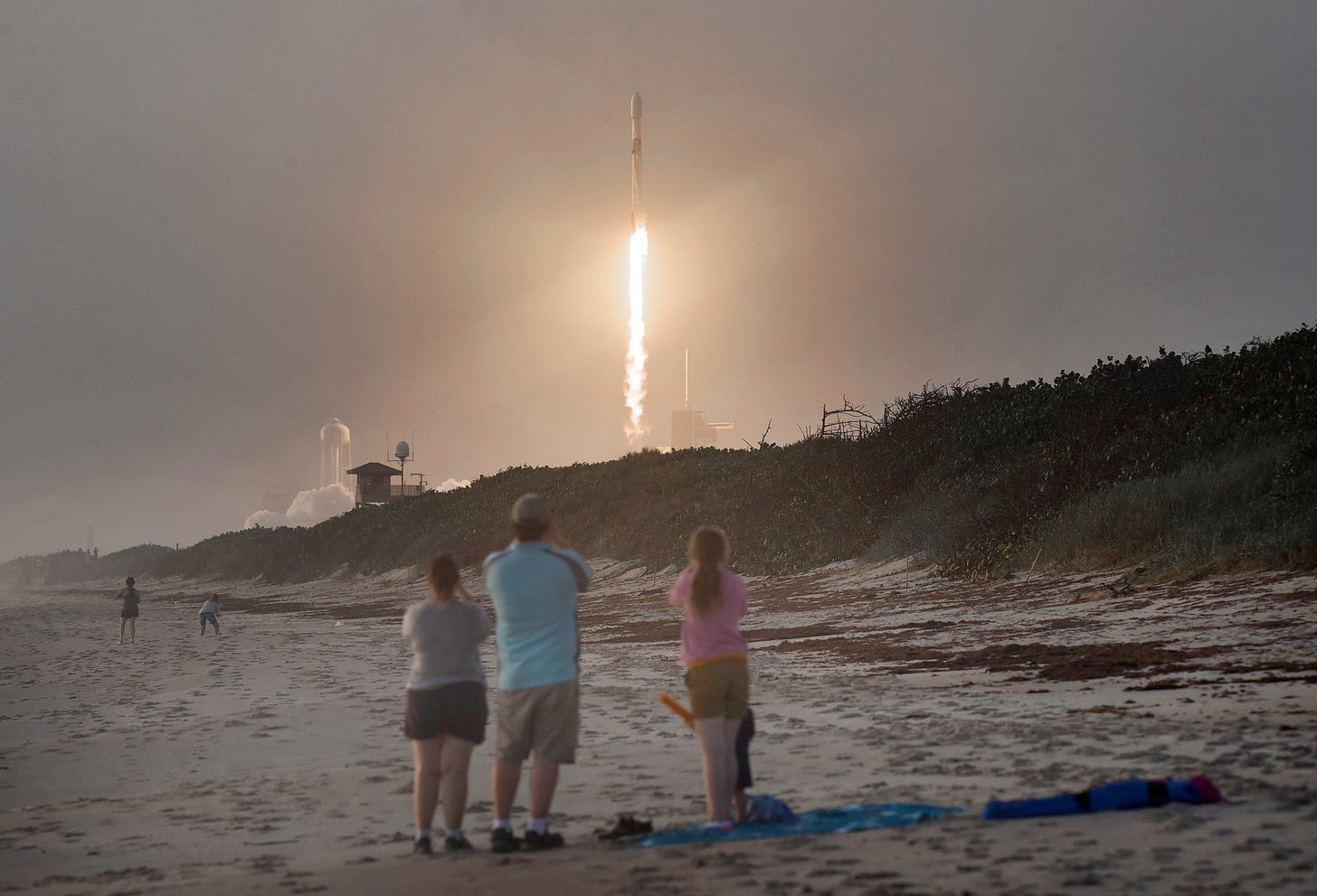Musk Reads: SpaceX Starlink public beta timeline

Musk’s red Roadster gets close to Mars and the Dragon capsule gets a big upgrade. What about Starlink on boats? It’s Musk Reads: SpaceX Edition #209.
A version of this article appeared in the “Musk Reads” newsletter. Sign up for free here.
Musk quote of the week
“Starship is designed to carry people & cargo around Earth (also to moon & Mars). Vast majority of use will be civilian. It’s just like an airline in space. All airlines sometimes carry military cargo, but ~99% is civilian.”
Read more about Musk’s response to a news story this week.
SpaceX
Liftoff! SpaceX launched the 13th batch of 60 Starlink satellites last week. The mission took off at 7:29 a.m. Eastern time from Launch Complex 39A at the Kennedy Space Center in Florida. The Falcon 9 also successfully returned to Earth, landing on the Of Course I Still Love You drone ship. The fairing half landed on the Ms. Tree ship. Read more.
So where does this leave the Starlink beta test? The internet connectivity constellation is expected to start offering service to users in the northern United States and Canada this year. Following the most recent launch, Musk declared that SpaceX will start a “fairly wide” public beta once the latest satellites “reach their target position.” If previous launches are anything to go by, it should take around four months for the batch to reach that stage. Starlink batches reach their orbit in thirds, with each third taking around a month and a half to meet the target. That would suggest a public beta will start around February 2021. Read more.
What’s next for SpaceX: SpaceX is set to launch the 14th batch of Starlink satellites at 8:27 a.m. Eastern time on October 18. The mission is set to lift off from Space Launch Complex 39A at the Kennedy Space Center in Florida.
In other Musk news…
Musk’s red Tesla Roadster has made its first close approach with Mars, SpaceX announced. The car, which launched in February 2018 on the first Falcon Heavy mission, came within 5 million miles of the planet.
The SpaceX Starship is drawing closer. A new fan rendering has demonstrated what the ship could look like when paired with the Super Heavy booster. Read more.
HBO is developing a six-episode series about SpaceX, Variety reports. The series is based on Ashlee Vance’s biography.
SpaceX has upgraded its Dragon cargo capsule ahead of the 21st resupply mission for the International Space Station. The new capsule can carry 50 percent more payloads than its predecessor.
The first non-test crewed Crew Dragon mission is now expected to take place no sooner than early to mid November. This delay will allow time for SpaceX to complete further hardware tests as it researches “off-nominal behavior of Falcon 9 first stage engine gas generators observed during a recent non-NASA mission launch attempt."
Musk Reads mailroom
Thomas Reddick writes:
How well if at all will the receiver antenna work on a boat? Boats pitch around on the water, especially a smaller boat say the size of a 40 foot catamaran. People would love to have internet in the middle of the ocean.
We may find out soon! A filing with the Federal Communications Commission last month claimed the firm plans to use Starlink on its drone ships in the Atlantic Ocean. It is admittedly a bit bigger than a catamaran, measuring around 330 feet by 170 feet, but this does suggest the company is making sea-based connections a focus for its tests.
Norman Frazier writes:
Would it be helpful to move the International Space Station to the Lagrange point between the Earth and the Moon?
It’s unfortunately unlikely to help. The Lagrange point is a point around two bodies in space where gravitational forces balance out, and any objects there could stay locked into the orbit of the two bodies. But Georgia State University explains that the L1 point directly between the Earth and the Moon is unstable. It would be “like balancing a pencil on its point” where “any perturbing influence will drive it out of equilibrium.” That L1 point is also really far; it’s much closer to the Moon than the Earth. While the Moon is around 238,855 miles from Earth, the ISS is only around 250 miles from Earth. Having the ISS close to Earth makes it easy to transport astronauts and cargo.
That’s not to say the Lagrange points hold no value. The L5 Society argued for years that humanity should develop permanent settlements at the stable L4 and L5 points.
Got any comments or queries? Don’t forget to send them over to muskreads@inverse.com.
Photo of the week
An idea for what the flag of Mars should look like. Read more.
Got any photos or videos you’d like to share? Feel free to send them over to muskreads@inverse.com.
The ultra-fine print
This has been Musk Reads: SpaceX Edition #209, the weekly rundown of essential reading about futurist and entrepreneur Elon Musk. I’m Mike Brown, an innovation journalist for Inverse.
Email me directly at mike.brown@inverse.com and follow Inverse on Twitter @inversedotcom. Follow me on Twitter @mikearildbrown.
Got any comments or queries? Don’t forget to send them over to muskreads@inverse.com.
What did you think of today’s stories? Hit reply to this email to let us know. Thanks for reading!
A version of this article appeared in the “Musk Reads” newsletter. Sign up for free here.

